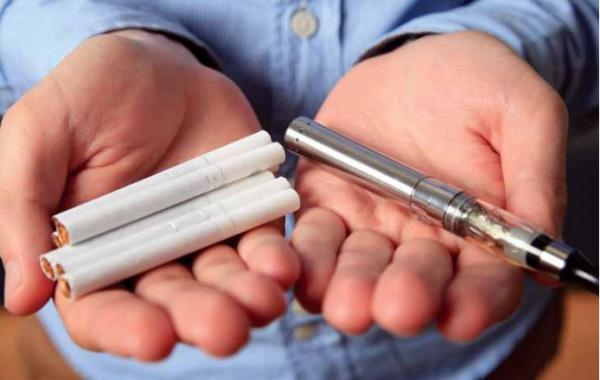Dr. Brad Rodu, a professor of medicine at the University of Louisville, a member of the James Graham Brown Cancer Center and an endowed chair in tobacco harm reduction research, was an early adapter of abandoning the "quit or die" approach to cigarette addiction, and embracing all avenues for smoking cessation. He also said we need to be more compassionate toward the smokers still remaining and advocate "harm reduction" while we get them to quit.
There's no question his approach – we adopted it as well, and he is on the American Council on Science and Health Board of Scientific Advisors, based on the strength of his arguments and research – has worked. Smoking has plummeted among young people. As we have always said, smoking is a pediatric disease so if we stop young people from uptake of cigarettes they won't become addicted to nicotine and get 200 toxic chemicals in smoke. Unlike nicotine gums and patches, vaping, colloquially called e-cigarettes, mimics many of the mechanisms of cigarette smoking, making them less psychologically stressful while easing people off of the nicotine that kept them smoking.
Yet the former administration's policies sent smoking cessation back to the 1990s, telling smokers to quit or die. The Centers for Disease Control and Prevention looked at plummeting smoking rates, and saw higher e-cigarette usage, and nonetheless began to hint that e-cigarettes could be a gateway to smoking. They also hinted vaping could be just as dangerous. None of it was based on evidence, it was instead the worst form of epidemiology; asking young people if they had tried an e-cigarette and then asking them to recall if they had seen an ad for vaping.
Gateway? How? The number of young people who were nicotine "naïve" and tried vaping and became smokers is insignificant. Yes, nicotine is addictive, so is caffeine, but like caffeine, in the token amounts found in products it isn't harmful. It is also silly to penalize tobacco companies who are doing exactly what we all said they should do - get out of the cigarette business. The government instead began declaring risk without even finding that nicotine vapor is hazardous (1), which is the same strategy regarding energy production and water that landed EPA in the mess it's in.
Recently, the Food and Drug Administration declared that any vaping product made after 2007 would have to go through the FDA approval process. Basically, they made millions of users into casual criminals at the same time states are trying to remove marijuana smokers from the casual criminal list. Yes, marijuana smokers. As was later discovered, the FDA was doing about e-cigarettes what EPA was doing with its Waters of the United States regulation; grooming hand-picked journalists who agreed to only use pre-selected sources and giving them special access to their decision, so those journalists could engage in political cover and help demonize the opposition.
What to do? A new administration can wipe out a lot of suspect decisions from the last one, the same way the last one undid a lot of his predecessor's policies. That is the nature of politics, and the posturing on e-cigarettes has been shown to be political and not health-based.
To outline what a smart policy would look like, namely stopping smoking and reducing harm, Dr. Rodu, Matthew Glans, and Lindsey Stroud of The Heartland Institute, have written Vaping, E-Cigarettes, and Public Policy Toward Alternatives to Smoking. They discuss what has worked in smoking cessation and harm reduction, the myths and facts about vaping, and why our regulatory policy could lead to sending people back to cigarettes.
You can also read our peer-reviewed publication Helping Smokers Quit: The Science Behind Tobacco Harm Reduction, which found that vaping was 98 percent safer than noxious cigarette smoke and is not a "gateway" to smoking any more more Advil is a gateway to fentanyl.
NOTE:
(1) In a perfect world, young people wouldn't engage in lots of risky behavior, like alcohol, rock climbing and drinking Red Bull. But they do. Picking one is capricious, or maybe a sign that activists don't care about ending smoking, they are simply anti-corporate and looking for a new lawsuit. That's not how government policy should be determined, though.




